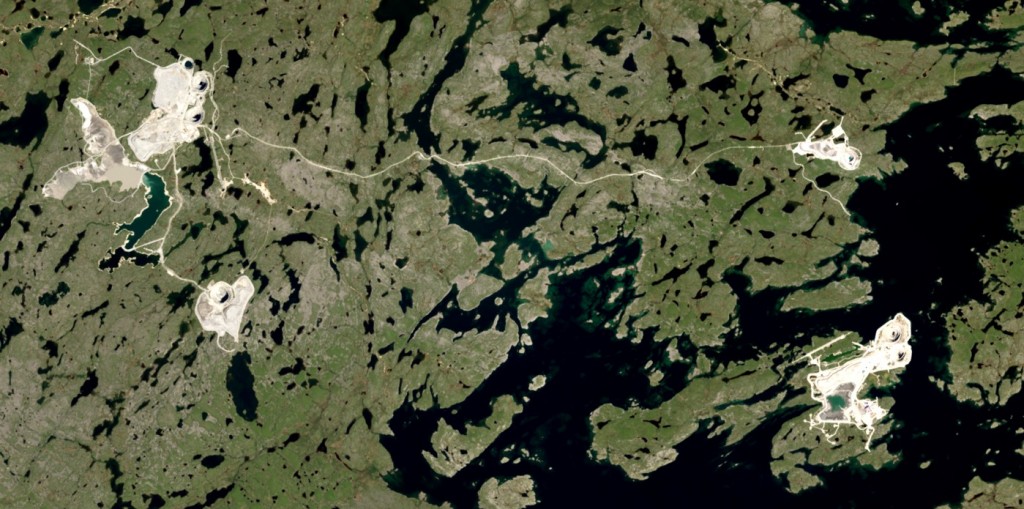20.4: Diamonds
- Page ID
- 7907
Although Canada’s diamond mining industry didn’t get started until 1998, diamonds are currently the seventh most valuable product mined in the country (Figure \(\PageIndex{1}\)), and Canada ranks third in the world in diamond production. Diamonds form deep in the mantle (approximately 200 km to 250 km depth) under very specific pressure and temperature conditions, from carbon that is naturally present in mantle rock (not from coal!). The diamond-bearing rock is brought to the surface coincidentally via a type of volcanism that is extremely rare (the most recent kimberlite eruption is thought to have taken place 10,000 years ago and prior to that at around 30 Ma). There is more on the volcanology of kimberlites in section 4.3. All of the world’s kimberlite diamond deposits are situated within ancient shield areas (cratons) in Africa, Australia, Russia, South America, and North America.
It has long been known that diamonds could exist within the Canadian Shield, but up until 1991, exploration efforts had been unsuccessful. In 1980 two geologists, Chuck Fipke and Stu Blusson, started searching in the Northwest Territories by sampling glacial sediments looking for some of the minerals that are normally quite abundant within kimberlites: chromium-bearing garnet, chromium-bearing pyroxene, chromite (Cr2O3), and ilmenite (FeTiO3). These distinctive minerals are used for this type of exploration because they are many times more abundant in kimberlite than diamond is. After more than a decade of exploration, Fipke and Blusson finally focused their search on an area 250 km northeast of Yellowknife, and, in 1991, they announced the discovery of a diamond-bearing kimberlite body at Lac de Gras. That discovery is now the Diavik Mine. The Ekati mine is situated 25 km to the northwest (Figure \(\PageIndex{1}\)). There are two separate mines at Diavik accessing three different kimberlite bodies, and there are five at Ekati. See Figure \(\PageIndex{16}\) for a close-up view of the Ekati Mine. As of 2019 there are seven operating diamond mines in Canada, four in the Northwest Territories (including Diavik and Ekati), and one each in Nunavut, Ontario and Quebec.

Media Attributions
- Figure \(\PageIndex{1}\): “Diamonds in the Sub-Arctic Rough” by Robert Simmon and NASA. Public domain.


